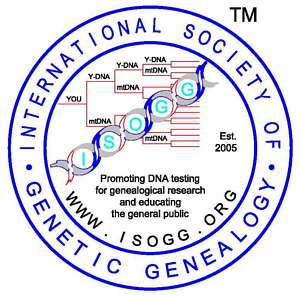Back to Y-DNA Tree Trunk
Back to SNP Index
Back to Papers/Presentations Cited
Back to Glossary Back to Listing Criteria
Copyright 2010. International Society of Genetic Genealogy. All Rights Reserved.

| LINKS: Main Page Y-DNA Tree Trunk SNP Index Papers/Presentations Cited Glossary Listing Criteria |
| CLADE/SUBCLADE SYMBOLS: Added Redefined |
| SNP SYMBOLS: Not on 2009 tree Confirmed within subclade Provisional Private |
I L41, M170, M258, P19, P38, P212, U179
�
I* - (unobserved)
� ;
I1 L75, L80, L81, L118, L121, L123, L125,
M253, M307.2/P203.2, M450/S109, P30, P40,
L121/S62, S63, L124/S64, L125/S65, S66, S107, S108, S110, S111
� �
I1* -
� �
I1a M21
(probably private)
� �
I1b M227
� �
�
I1b* -
� �
�
I1b1 M72
� �
I1c P259
(probably private, location with respect to L22/S142 is uncertain)
� �
I1d L22/S142
� �
�
I1d* -
� �
�
I1d1 P109
� �
I1e S79
(probably private, confirmed within I1, but exact location is uncertain)
�
I2 L68, M438/P215/S31
� �
I2* -
� �
I2a P37.2
� �
�
I2a* -
� �
�
I2a1 L158, L159, M26
� �
� �
I2a1* -
� �
� �
I2a1a L160
� �
� �
�
I2a1a* -
� �
� �
�
I2a1a1 M161 (possibly private)
� �
�
I2a2 L178, M423
� �
� �
I2a2* - (unobserved)
� �
� �
I2a2a L69.2(=T)/S163.2 (See Notes)
� �
� �
�
I2a2a1 P41.2/M359.2
� �
� �
I2a2b L161
� �
�
I2a3 L233
� �
I2b L35, L37, M436/P214/S33, P216/S30,
P217/S23, P218/S32
� �
�
I2b* -
� �
�
I2b1 L34, L36, L59,
M223, P219/S24, P220/S119, P221/S120, P222/U250/S118, P223/S117
� �
� �
I2b1* -
� �
� �
I2b1a M284
� �
� �
�
I2b1a1 L126/S165, L137/S166
� �
� �
I2b1b M379
� �
� �
I2b1c P78
� �
� �
I2b1d P95
� �
�
I2b2 L38/S154, L39/S155, L40/S156,
L65.1/S159.1
Notes
Y-DNA haplogroup I is a European haplogroup, representing nearly one-fifth of the population. It is almost non-existent outside of Europe, suggesting that it arose in Europe. Estimates of the age of haplogroup I suggest that it arose prior to the last Glacial Maximum.
The two main subgroups of haplogroup I likely divided approximately 28,000 years ago:
References:
Athey et al, Resolving the Placement of Haplogroup I-M223 in the Y-chromosome Phylogenetic Tree. (pdf) Journal of Genetic Genealogy, 1:54-55, 2005.Additional Resources:
Bob Waterous,
Haplogroup I Y-DNA Project
Ken Nordtvedt, Founder Haplotypes (Modal Haplotypes for Y-Haplogroup I
Varieties)
I1 Project Team (Rebekah Canada, Phil Goff, Aaron Hill, Ken Nordtvedt, Steve Transgrud, Samuel Theil),
Y-DNA Haplogroup I Subclade I1
Phil Goff, Deep Ancestry of I1a DYS19=16
Cluster
Rebekah Canada, The I1c (I-P109) yDNA Haplogroup Project
Bill Morrow, Y-Haplogroup I2a Project
Tim Weakley, I1b2* Project Database
Timothy Weakley, I2b2 L38+ Project
Contact People for Haplogroup I: Phil Goff or Whit Athey
Corrections/Additions made since 1 January 2010:
| Back to Main Page Back to Y-DNA Tree Trunk Back to SNP Index Back to Papers/Presentations Cited Back to Glossary Back to Listing Criteria Copyright 2010. International Society of Genetic Genealogy. All Rights Reserved. |

|